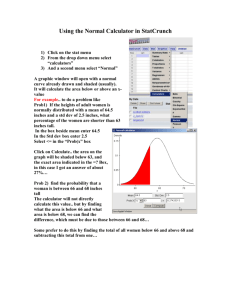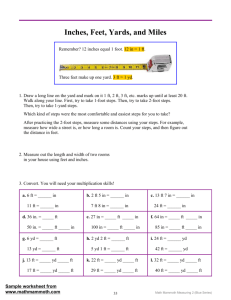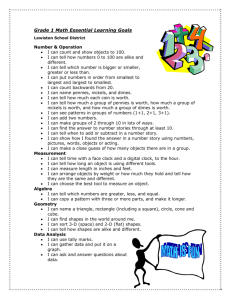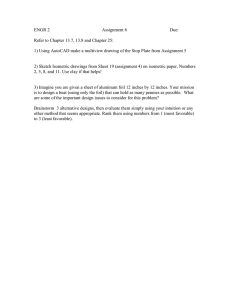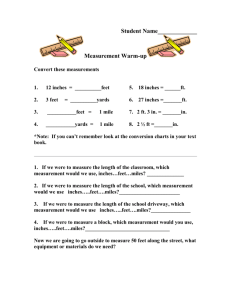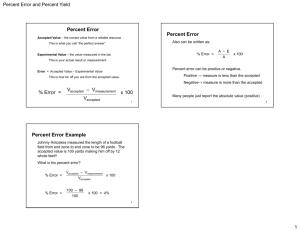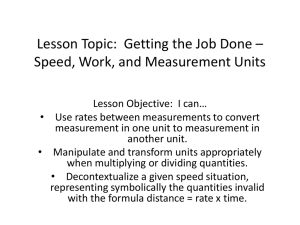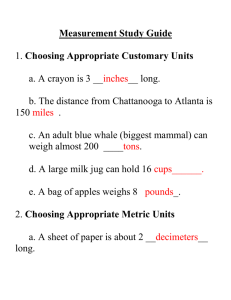second grade Math Study Guide EOY 2012
advertisement
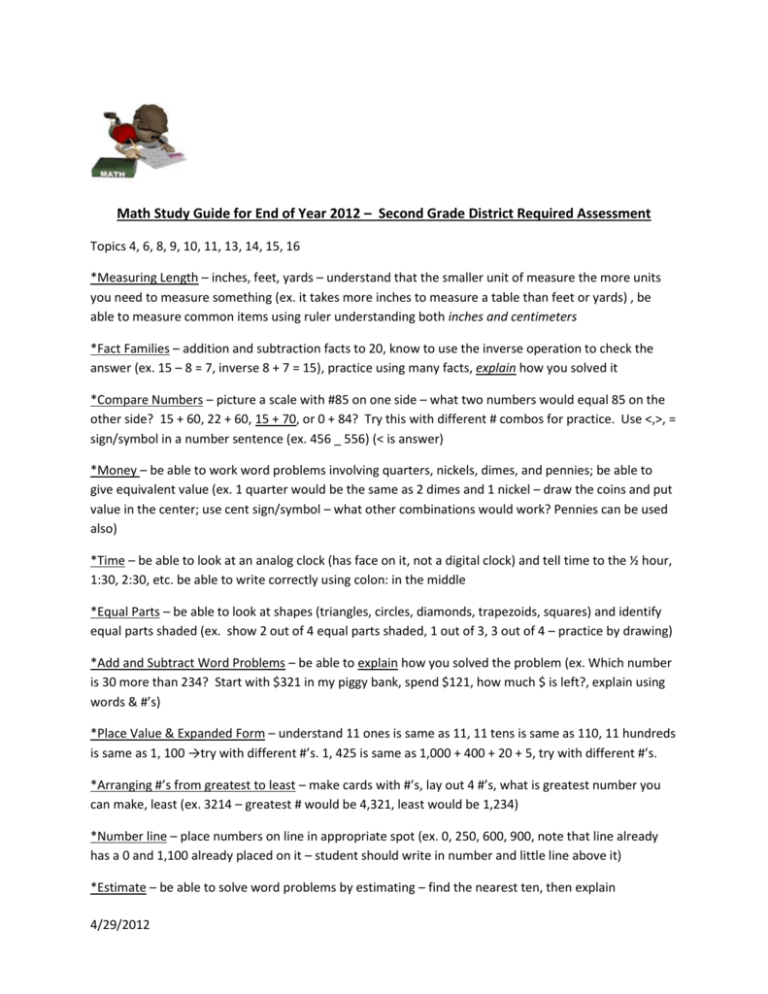
Math Study Guide for End of Year 2012 – Second Grade District Required Assessment Topics 4, 6, 8, 9, 10, 11, 13, 14, 15, 16 *Measuring Length – inches, feet, yards – understand that the smaller unit of measure the more units you need to measure something (ex. it takes more inches to measure a table than feet or yards) , be able to measure common items using ruler understanding both inches and centimeters *Fact Families – addition and subtraction facts to 20, know to use the inverse operation to check the answer (ex. 15 – 8 = 7, inverse 8 + 7 = 15), practice using many facts, explain how you solved it *Compare Numbers – picture a scale with #85 on one side – what two numbers would equal 85 on the other side? 15 + 60, 22 + 60, 15 + 70, or 0 + 84? Try this with different # combos for practice. Use <,>, = sign/symbol in a number sentence (ex. 456 _ 556) (< is answer) *Money – be able to work word problems involving quarters, nickels, dimes, and pennies; be able to give equivalent value (ex. 1 quarter would be the same as 2 dimes and 1 nickel – draw the coins and put value in the center; use cent sign/symbol – what other combinations would work? Pennies can be used also) *Time – be able to look at an analog clock (has face on it, not a digital clock) and tell time to the ½ hour, 1:30, 2:30, etc. be able to write correctly using colon: in the middle *Equal Parts – be able to look at shapes (triangles, circles, diamonds, trapezoids, squares) and identify equal parts shaded (ex. show 2 out of 4 equal parts shaded, 1 out of 3, 3 out of 4 – practice by drawing) *Add and Subtract Word Problems – be able to explain how you solved the problem (ex. Which number is 30 more than 234? Start with $321 in my piggy bank, spend $121, how much $ is left?, explain using words & #’s) *Place Value & Expanded Form – understand 11 ones is same as 11, 11 tens is same as 110, 11 hundreds is same as 1, 100 →try with different #’s. 1, 425 is same as 1,000 + 400 + 20 + 5, try with different #’s. *Arranging #’s from greatest to least – make cards with #’s, lay out 4 #’s, what is greatest number you can make, least (ex. 3214 – greatest # would be 4,321, least would be 1,234) *Number line – place numbers on line in appropriate spot (ex. 0, 250, 600, 900, note that line already has a 0 and 1,100 already placed on it – student should write in number and little line above it) *Estimate – be able to solve word problems by estimating – find the nearest ten, then explain 4/29/2012

